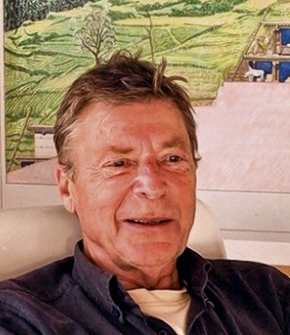Andreas Brandt

- Profession: Architect
- Country of Origin: Germany
- Date of Birth: 1937
Andreas Brandt (1937-2014), a German architect born in Bremen, studied building construction at Bau and Ingenieurschule Bremen in 1960. Brandt did an apprenticeship as a mason and studied architecture at the Academy of Fine Art in Kunstakademie Düsseldorf until 1964. As an architect, he first practiced in Finland, and from 1967-69 he lectured as a visiting professor at the institutes for Urban Design and Architecture at Berkeley and Yale. He also held the position of the Chair of Architectural Design at the University of Darmstadt from 1991 to 2002.
Brandt had, by then, explored the narrow streets of Italy and Greece and admired the pyramids and vistas of pre-Columbian culture – and what he looked for was a change.
“I had now come to a point where I wanted to look beyond the self- reflecting mirror of the West. I left Europe on a search for new dimensions – new dimensions of light and shade; of inside and outside; of openness and privacy. My first journey, of three months, took me to Nepal, to China and to East Tibet. It became clear to me that this was to be just the first step on a much longer journey; in the years that followed.”
Brandt first came to Nepal in 1999 and documented a village of the eastern Magar in Myagdi District in the year 2000 of March. In November 2003, he did the same for Yaphu, a village of Rai in the district of Sankhuwasabha. In March/April 2006, he and his colleague Nguyen The Phuong documented Kuru, a village of Chhetri, and Raut Bada, a village of Giri, both located in the district of Bajura and Budu, as well as a village of Thakuri in Mugu.
He traveled throughout South and East Asia, studying structures of a radically different kind: buildings and settlements he was unfamiliar to as an architect who had only worked in Central Europe. He worked on the documentation of houses and landscapes in South and Central Asia, which later in 2011 was published as a book titled “House and Landscapes in Asia: Villages, Houses and Temples in Nepal, Orissa, Vietnam and Mongolia, 2000-2009,” by Alphaeus Verlag, Berlin. In the Introduction to his book, he shares:
“On that first journey I learned how to immerse myself in an archaic way of life for many weeks at a time and up to the limits set by physical and spiritual exhaustion. Written descriptions are not my primary medium so I preferred to bring my impressions of houses, villages and landscapes to life by drawing: with pencil, quill and crayon on architects’ tracing paper. Nevertheless, it was my intention that my recordings of houses and settlements in the landscape could be both read and understood as a text. It proved to be the most time-consuming project. This reflects the difficulty of capturing the wealth of detail in a landscape and in construction, precisely and atmospherically, just as they appeared to me and to my companions.”
After his first journey, he took a leave from his career as an architect. He invested his time in traveling South and Central Asia on foot and learning other traditions of building first-hand – by drawing them. In his words:
“These were journeys through hidden worlds preserved in remote landscapes. On these journeys I learnt how little “self” means when, having abandoned the trivial comforts, I rediscovered the meanings of “a dwelling”: to end the day by candle-light; to fix the roof when it rained; to fall asleep to the sound of the livestock below. I discovered that many remarkable forms of architecture still survive as miracles of craftsmanship – even in an age when every corner of the world has been flooded by consumer products made in China.”
The documentation of the villages in Nepal, Orissa and Vietnam records the precise moment when Brandt and his team were there. Their drawings reflect the conditions of the prevailing season, both in the houses and the surrounding fields. The book provides a detailed understanding of how “the vagaries of the climate and the topographical challenges that provide sufficient stimulus for a continual rethinking of the positioning and the form of buildings and settlements” in the Himalayas.
N/A
N/A
N/A
N/A